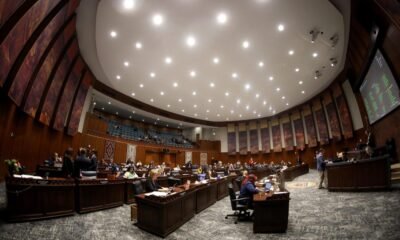Business
Urgent Deadline Approaches for Gilbert and Local Governments to Utilize Billions in Federal Pandemic Relief

GILBERT, Ariz. — The Phoenix suburb of Gilbert faces an impending deadline regarding the $24 million it received from federal COVID-19 relief funds. Town officials revealed that as of the latest federal data, only 25% of these funds are currently obligated for various projects.
A critical project for a crime victims center has yet to break ground; the designated site remains an empty lot. As Gilbert officials work to finalize contracts, they stress their commitment to mobilizing these funds for essential community projects before the end of the year.
The American Rescue Plan, consisting of a total of $350 billion, requires local governments to allocate all funds by year-end or risk returning any unspent amounts to the U.S. Treasury. Despite Gilbert’s slow start, data indicates that approximately 80% of all municipalities have managed to meet their obligations.
Yet, a significant portion of local governments is lagging. An Associated Press analysis found that about one in five have obligated less than half of their funds, while 3,500 others reported committing less than 25%. While some may have utilized their allocations without reporting details, others appear uncertain about effective spending.
The U.S. Treasury is actively reaching out to communities to clarify requirements, aiming to facilitate better understanding of their financial obligations. Critics of the American Rescue Plan have expressed concerns regarding potential misallocations, citing instances where funds may be utilized for projects unrelated to pandemic recovery. Conversely, some local officials argue that these funds are vital for realizing long-overdue community projects.
Gilbert’s strategy focuses heavily on addressing interpersonal violence through a dedicated facility, projected to cost $43 million. This center aims to provide essential services, including forensic exams, interviews, and counseling for victims of sexual assault and domestic violence. Officials believe that funding from the pandemic relief will cover more than half of the project’s budget, with supplemental financing from the town’s general funds.
Assistant Town Manager Leah Rhineheimer emphasized the project’s significance, labeling it a “meaningful” investment in community welfare. The town expects to award a construction contract in the fall, a pivotal move towards fulfilling Treasury obligations.
Meanwhile, various local governments across the country are taking measures to ensure that funds are utilized effectively. In Dearborn Heights, Michigan, Mayor Bill Bazzi indicated initial logistical challenges after taking office coincided with the funds’ arrival. Yet, the city plans to allocate the relief funds for necessary infrastructure projects.
As the deadline draws near, states like Missouri and Connecticut are reallocating funds to ensure that they do not lose federal support. Missouri’s government recently revised its spending strategy, diverting resources from COVID-related projects to initiatives in education and infrastructure.
In similar circumstances, New Orleans reported significant progress in allocating its federal funds, with 86% obligated as of September. City officials underscored their commitment to meeting local needs rather than returning unused funds.
As communities look toward the future amid tight deadlines, the successful utilization of these funds could play a critical role in recovery and development. Every dollar slated for aid represents an opportunity for improvement and progress in local sectors.

















